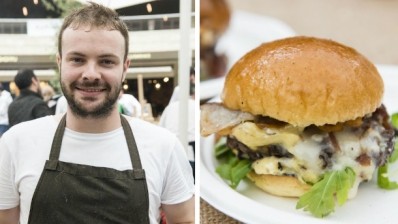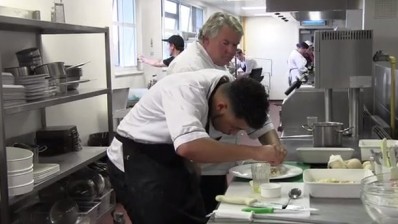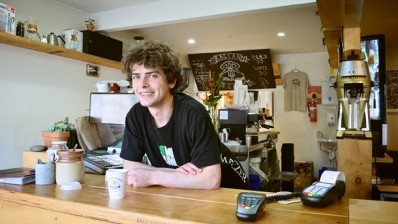Employee of the month: How internal competitions help motivate staff

The average diner at a chain restaurant would probably be intrigued to know that the people serving them are often not recommending a certain starter or suggesting that second bottle of wine to swell their employer’s coffers or even for a better tip. It’s often to claim victory in the ongoing battle that is internal competitions.
“We generally use competitions to engage staff with a particular product or perhaps a group of products,” says Carluccio’s operations director Sarah Murray. “We also find that our competitions encourage front-of-house staff to learn more about our menu and retail offering because being able to talk about food and drink authoritatively is a great selling tool.”
Front-of-house competitions tend to be structured around obvious key performance indicators (KPIs) such as average spend per head, dessert sales and glowing customer feedback, and are run at branch level.
Prizes at Carluccio’s include a retail voucher and an upgraded staff meal, but employees are also rewarded with time off or more sympathetic shift patterns. Murray says: “Our branch managers often offer to run a servers’ section for a busy evening, which we find works well because it injects an element of fun.”
It’s an idea that many independents and smaller groups should consider borrowing from the bigger players. Incentivising staff with relatively small prizes and other benefits can make a clear difference to the bottom line that’s likely to outweigh the expenditure on them.
Some groups also organise events that see branches pitted against each other. For a national chain, getting lots of staff together in one place can be expensive, so many link up with other companies to keep costs in check.
Las Iguanas recently partnered with Pernod Ricard and fruit juice brand Rubicon for its annual Best Bartender competition, for example. Danny Smith – who heads up Las Iguanas’s incentives and motivation division – shook up the format this year by bringing the competition into the public eye. Bartenders from the South American-themed restaurant group’s 38-strong estate competed within Westfield Stratford
City’s Great Eastern Kitchen.
“I wanted to do something a bit different that would showcase our barkeeping talent,” explains Smith. “Las Iguanas has become quite big now, but we like to keep things fresh and avoid an overly corporate feel. The guys were mic’d up and on a stage and we handed out samples to the crowd, which added an extra dimension.”
The competition involved a sudden-death free pour round – the amount of spirits the brand shifts per week is such that a bartender’s ability to pour accurately is crucial – a wild card round that saw competitors make a drink with randomly selected flavours of Absolut vodka and Rubicon fruit juice, and an inventiveness round where bartenders created their own cocktails.
National casual-dining chain Giraffe runs a yearly ‘G’oscars’ event designed to reward its top branches and staff. The awards are based on the group’s main KPIs including mystery diner reports and spend per head, although the company is moving away from rewards for financial success to focus on staff development achievements, such as staff retention and the number of staff members at a branch to be promoted to management level.
“We always keep things fresh. If you repeat the same old event year in, year out it can get stale and formulaic,” says Giraffe operations director Tom Crowley. “It can also morph into a yearly piss up that people don’t necessarily engage with in the right manner. We always change the venue and style of the G’Oscars. Last year, we had a glitzy black tie do and this year, we’re planning a mini outdoor festival. We always put the emphasis on fun.”
All levels of chefs invited
With detailed reports on what items servers have sold and bill averages available at a touch of a button, front-of-house competitions are straightforward to run.
Back-of-house competitions are – by comparison – more tricky and require a lot more work.
The Gordon Ramsay Group runs two chef competitions across its London restaurant estate, one aimed at commis chefs and one for chef de parties. Both follow a similar format: a written test that assesses the competitor’s knowledge of ingredients and cooking techniques followed by a live cook off at the University of West London, which provides many of the group’s apprentices.
Last month, 20 of the group’s chef de parties battled it out, making their own original dessert and cooking a main course from a mystery basket that included duck breast, cauliflower, blood orange and parsnip.
A panel of judges including Clare Smyth, chef-patron at Restaurant Gordon Ramsay; Stuart Gillies, managing director at Gordon Ramsay Group; and Maze executivechef Matt Pickop named Bread Street Kitchen’s
Dario Catapona as the winner.
“It’s about delivering excellence for us. We want people at all levels to try and be the very best whether they’re a commis or a head chef. We had 40 entries for last year’s commis chef competition,” says Pickop, who plays a key role in organising the two annual competitions.
At the predominantly London-based Hix Group, competitions are run on a rather more informal basis. Every two weeks, chef restaurateur Mark Hix presents 10 or so of his senior chefs with an array of seasonal ingredients. Names are pulled out of a hat and two chefs at a time are asked to ‘Challenge Hix’ and have 20 minutes to prepare as many dishes as possible. Some chefs will prepare dishes in advance – for example, slow-braised beef – if they want Hix to give them feedback on a new menu item.
Informal challenge
Hix likes to mix up the format. A recent session of Challenge Hix – which takes place at the chef’s Tramshed restaurant in Shoreditch – saw him lead a goat butchery demo and discuss the different cuts, and then each chef challenged him with goat-based dishes. Hix also gets in suppliers, chef friends and even journalists – Observer critic Jay Rayner recently dropped in – to give feedback and ‘judge’ the contest, which promotes creativity within the group and also gives senior chefs some valuable one-on-one time with the boss.
ETM Group executive chef James Lyon-Shaw also likes to keep his competitions casual. During the tough Christmas period, he runs a competition designed to lighten things up a little and reward hard work. Each head chef is given a pack of cards and hands out individual cards to chefs that have performed particularly well. There are weekly perks awarded to those with lots of cards such as a free round of drinks and the person who holds the most cards when the deck runs out is treated to a free meal for two.
“We try and keep it light and fun. It can be a bit of a slog sometimes in the kitchen and chefs often get overlooked with a lot of the fun stuff going to front of house, who tend to get on a lot of beverage-related trips. All of our kitchen competitions are about keeping morale high and promoting quality and consistency,” says Lyon-Shaw.
ETM also runs a yearly best Game Dish competition and an annual slider-making competition. Any chef within the group is able to submit a slider recipe and the winner gets to represent ETM Group at its Slider Decider competition at The Gun in Docklands, London, going up against a number of high-profile chefs. Their creations are also sometimes reworked and used on the various restaurants’ specials boards and, occasionally, even on the regular menus.
“We want our more junior chefs to feel like they can have input into the menu, and competitions are an ideal way to drive that. If they get a special on the board and see it selling well, they get very excited,” adds Lyon-Shaw.
Cooking competitions are perhaps even more important within groups that don’t change the menu very much and have fairly standardised cooking processes. Launched seven years ago, Carluccio’s Chef of the Year competition is open to all kitchen staff below head chef level.One chef is nominated by each restaurant and the chain’s area managers organise regional cook-offs prior to a final at Carluccio’s training academy in Islington. About 20 chefs compete and have to cook one dish from one of Antonio Carluccio’s books, one dish from the Carluccio’s menu – last year it was lobster spaghetti – and one Italy-inspired dish of their own invention.
The competition is judged by training champion Malcolm Fogg, executive chef Eric Chauvet and Carluccio himself. The 83-strong chain’s specials menus are replete with dishes conceived for its Chef of the Year competition, including lamb chops stuffed with Parma ham fat and roasted red peppers, and last year’s winning dish of tomato and mascarpone soup with pesto and Parmesan croutons.
“It’s always difficult to motivate chefs. Our food is fresh but it’s the same menu day in, day out. These competitions take a lot of resources to organise but they result in some great new menu items and they also highlight to management who our future head chefs may be,” says Murray.
Menu development
Chef competitions can also be used to drive menu development. Fast-expanding US restaurant chain Ed’s Easy Diner doesn’t employ an executive chef or development chef, so its annual competition to find a limited-edition burger for its menu is a useful way of bringing menu development to the fore.
Every chef within the business is invited to submit a burger recipe and – after a round of paper judging – 12 finalists cooked their recipe at the group’s recently opened restaurant in Victoria Station.
Earlier this year, a panel of judges including members of the senior management team and celebrity chef Brian Turner named Chelsey Kenny from Ed’s Leicester branch the winner for her Great Balls of Fire – a meatball and American cheese-based burger that references the chain’s 1950s music policy.
The burger made its debut on the Ed’s Easy Diner menu last month with £1 from each sale donated to charity Action Against Hunger.
“We try and link all our competitions with a charity,” says group operations director Reuben Todd. “It’s a great way of bringing people in on something that’s not just about work and profits.”

































